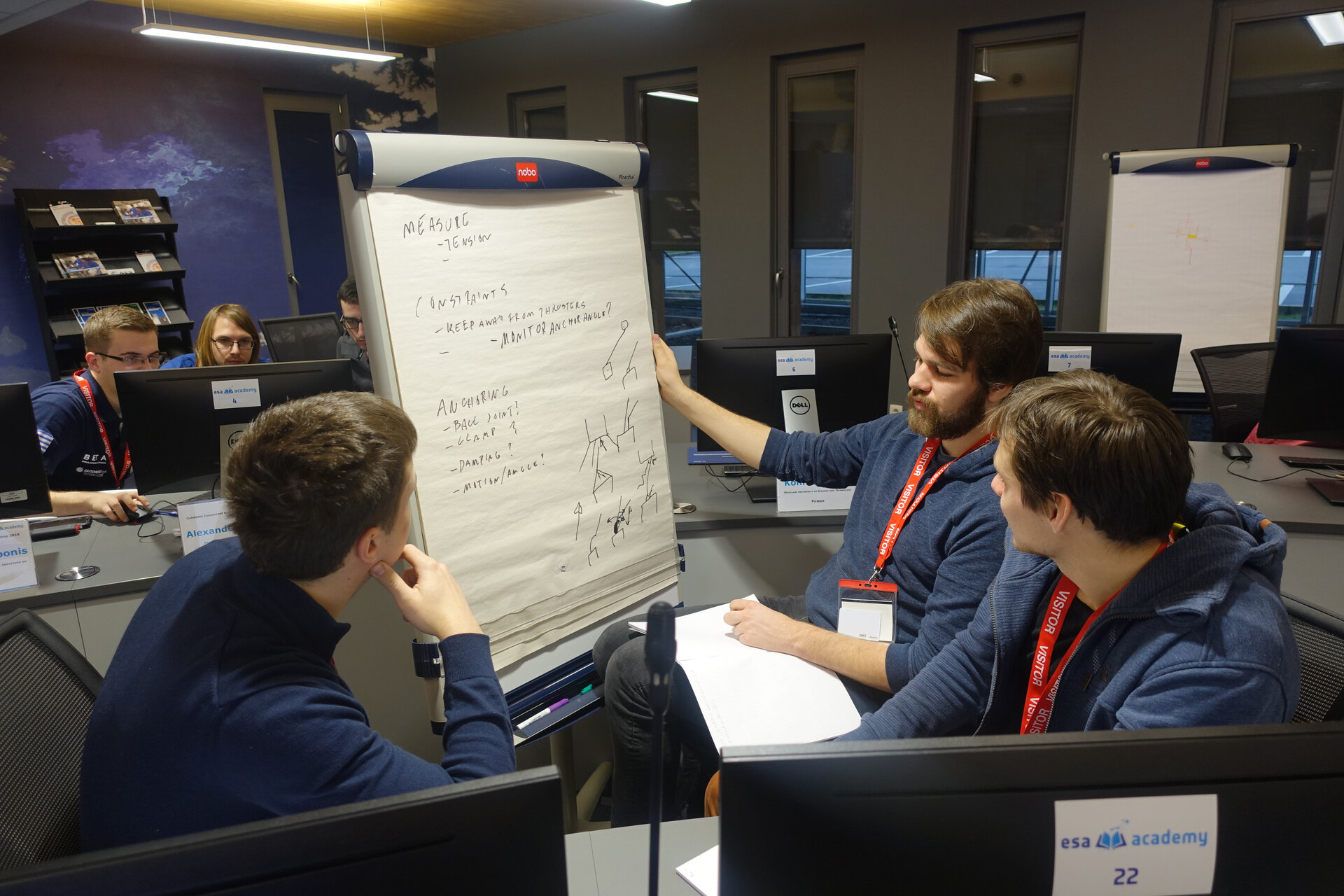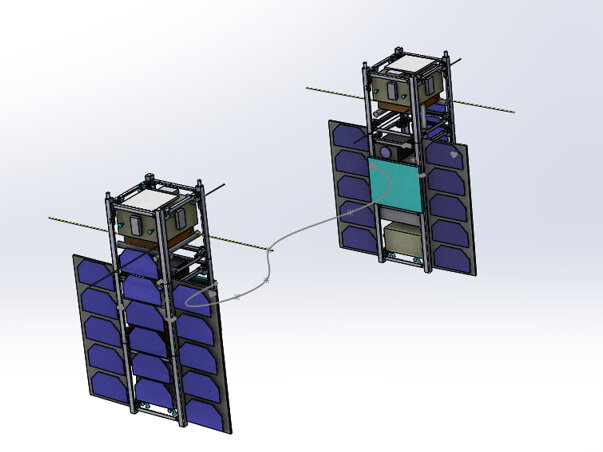Concurrent Engineering helps University students design a CubeSat mission to tackle space debris
An ambitious group of 30 university students from 14 different ESA Member and Associate States have completed ESA Academy’s CubeSats Concurrent Engineering Workshop 2019. Held from 15 to 18 January 2019 at ESA Academy’s Training and Learning Facility in ESEC-Galaxia, Belgium, this intensive workshop utilised ESA’s educational Concurrent Design Facility.
The students all belong to university CubeSat teams. CubeSats are small but fully-functional satellites, standardised in units of 10x10x10cm. They are often favoured by universities as their small size and weight makes launching them into space a realistic proposition.
Explained a student from the Carleton University, Canada: “This was an all-around amazing experience where I was able to learn a significant amount about the design of CubeSats and bring that back to my team at the university. It was a great opportunity to work with students and professionals with immense knowledge and passion for satellite design and space applications.”
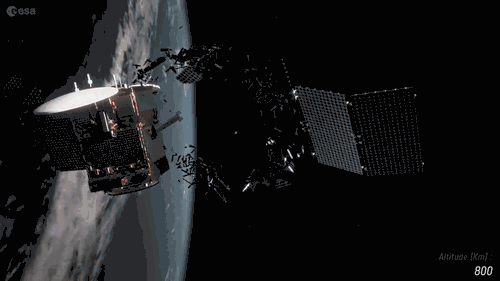
This workshop’s goal was to demonstrate to the students how Concurrent Engineering could be used to successfully develop a mission concept. Concurrent Engineering is a design approach where all stages of a project are worked on simultaneously. This is challenging, as a small change to one satellite subsystem can have significant impacts on other subsystems. However, the potential benefits are many, including a vast increase in overall project development efficiency.
To aid their learning, the students were issued a challenge: use Concurrent Engineering to develop a technology demonstrator mission that would test technologies to help in cleaning up space debris. Sometimes called “space junk”, this is countless pieces of human-made debris in orbit, creating hazards for spacecraft. Space debris poses an increasing problem as we send more craft into space, and no adequate solution has yet been implemented. Concepts for the removal of space debris are being studied within ESA and European industry, using different options for capturing debris.
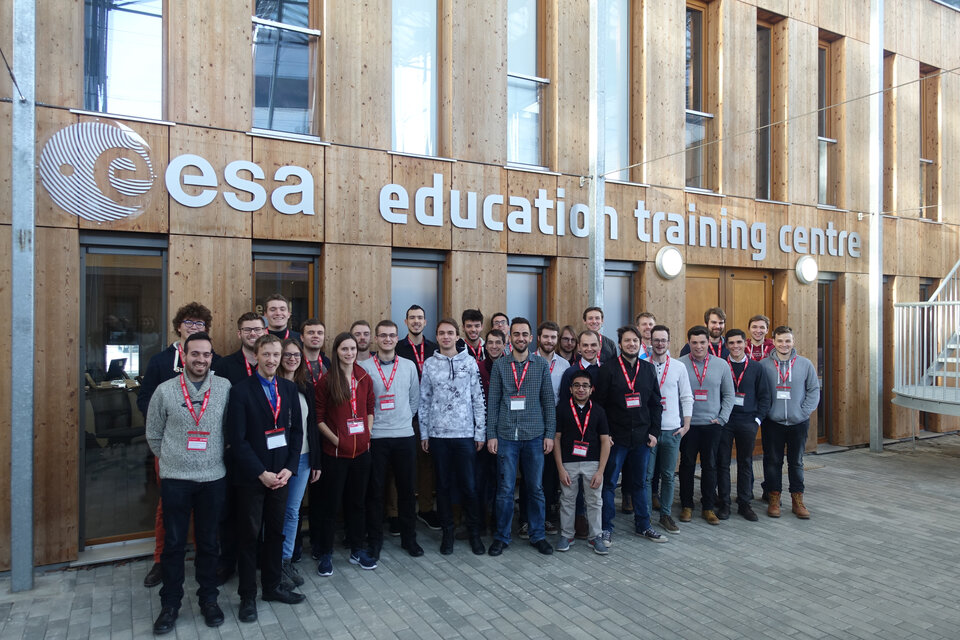
Concurrent Engineering sessions were complemented with CubeSat-related lectures, boosting students’ knowledge of these versatile satellites. Information was also given about the Fly Your Satellite! programme run by the ESA Education Office, in which students are helped to develop their own CubeSats, and can even launch them into space!
Once the students had sufficient background knowledge, they began to work on the mission known as “Stabilisation Experiment with Tethered Satellites” – SETS for short. Working in small teams, they focussed on seven disciplines: mission analysis, attitude and Orbit Control Systems (AOCS), communications, power, configuration, thermal and system engineering.
“I was surprised about the amount of knowledge I gained,” said a student from Centrale Supelec, France, “especially for managing space projects. I discovered Concurrent Engineering, and I will probably try out this process back in my University. Getting together 30 highly-qualified students, supervised by ESA experts, allowed us to be 10 times faster than in my own project at home, which was amazing!”
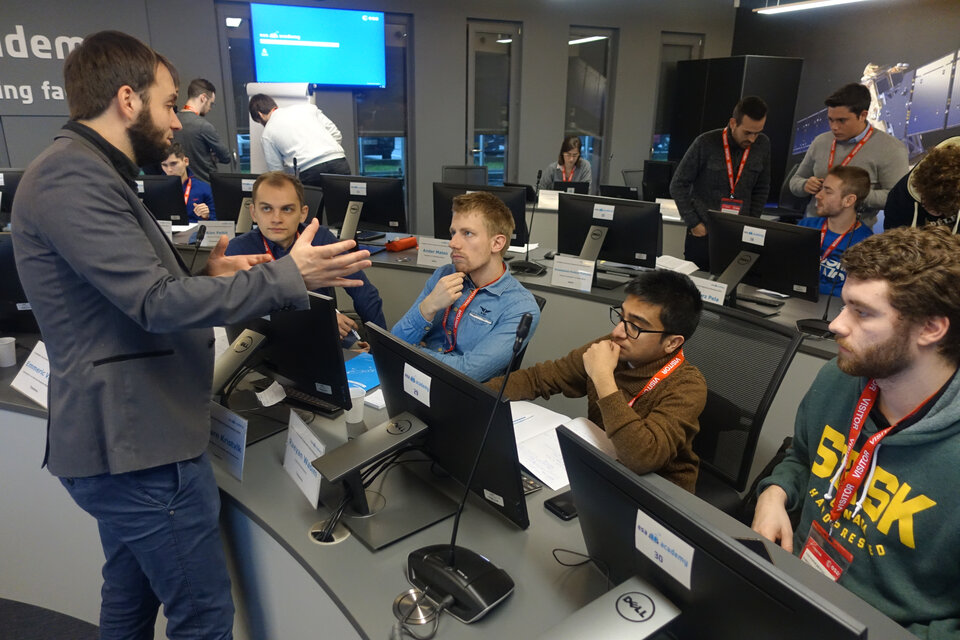
The Open Concurrent Design Tool (OCDT), which is used by ESA specialists in the ESTEC CDF, was utilised by the students to great effect. Each group began to understand how their own subsystem design parameters impacted other designs, and sought to make the end result greater than the sum of its parts. Sometimes trade-offs needed to be negotiated, and intense discussions were had, all in aid of the ultimate goal of producing a successful mission concept. After three days of hard work refining subsystems, the students finalised the preliminary design of SETS.
The students then presented their results to the ESA experts. SETS would consist of two 3-unit CubeSats in a Low Earth Orbit aiming to test the controllability of the two satellites connected by a tether, simulating the stabilisation and removal of a piece of space debris which has been captured. The ESA experts were impressed at how the students had grasped the concepts discussed early in the workshop, and had put them into practice.
“The CubeSats Concurrent Engineering Workshop 2019 was simply amazing,” commented a student from the Fachhochschule Wiener Neustadt, Austria. “Using cutting edge technology to work with great people on an interesting project, supervised by knowledgeable and kind professionals. Easily one of the highlights of my education!”
Having completed the workshop, the students are now much better prepared to return to their universities to develop their own CubeSats, and perhaps even apply for a future edition of the Fly Your Satellite! programme.
Similar opportunities will be offered in the future. To be informed regularly check the current opportunities page.


